Streptocarpus (Cape Primrose) Hybridizing - Part 1
Hundreds of Streptocarpus Plants I Started From Seeds: The Results Begin Pouring In
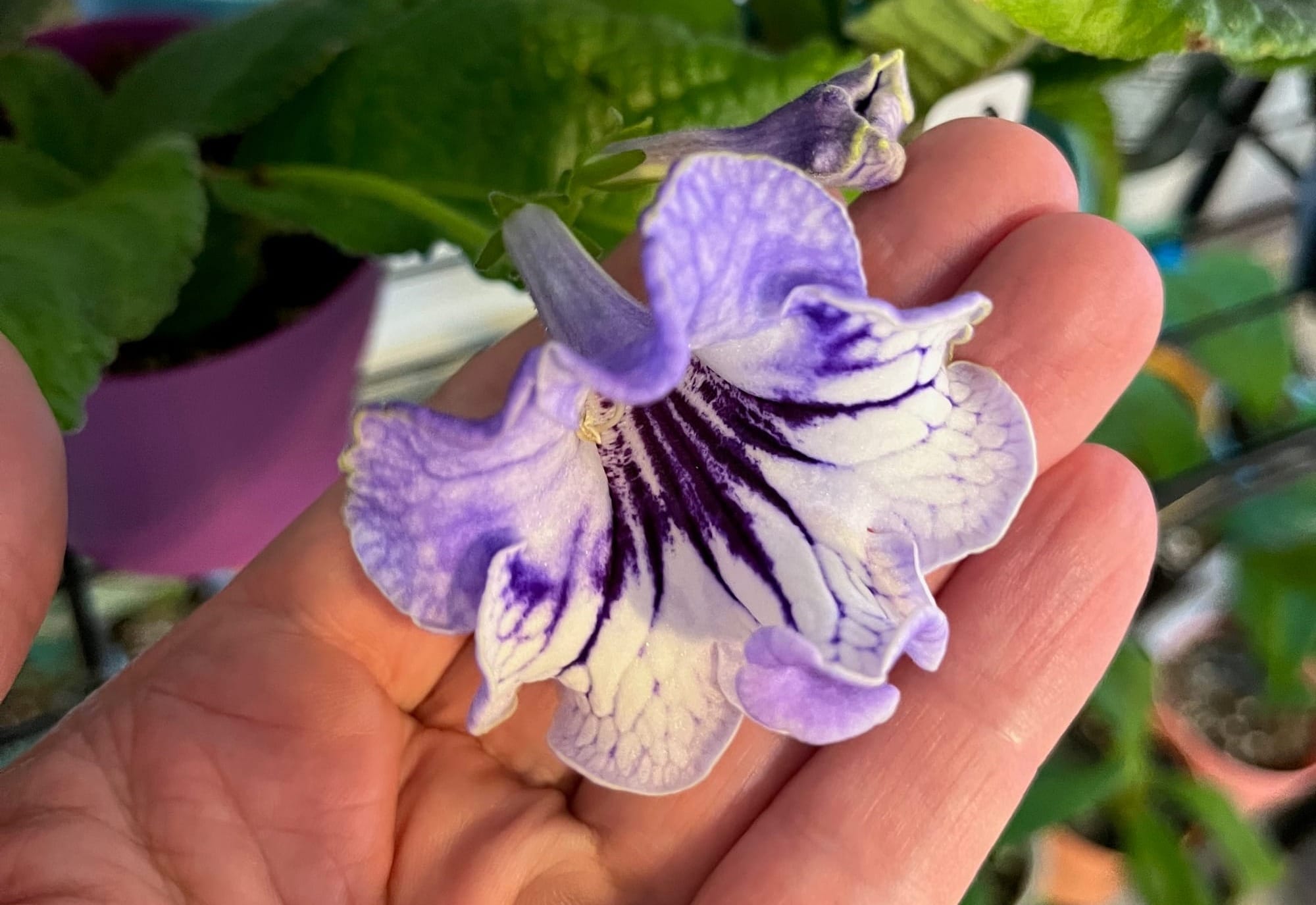

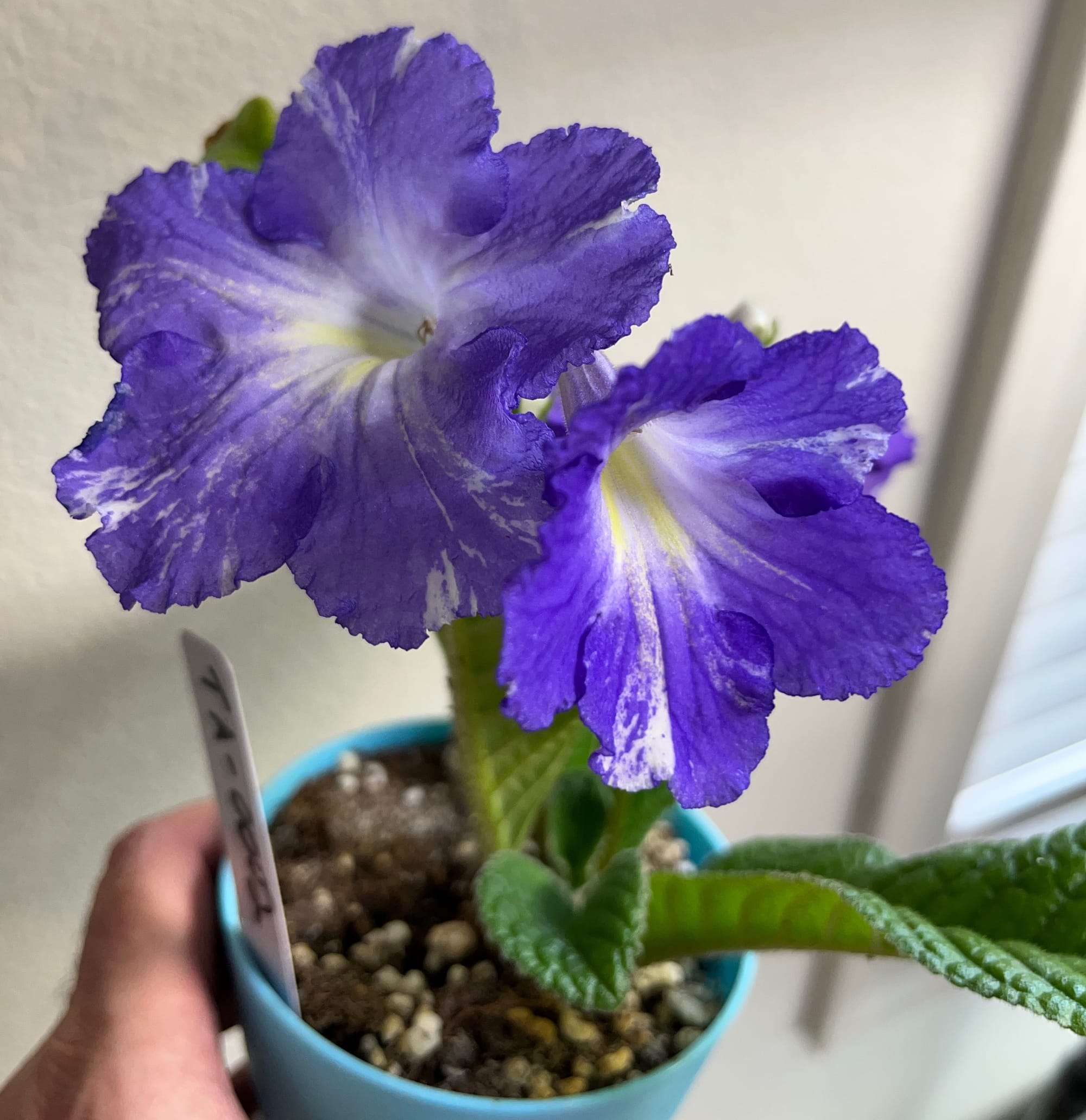
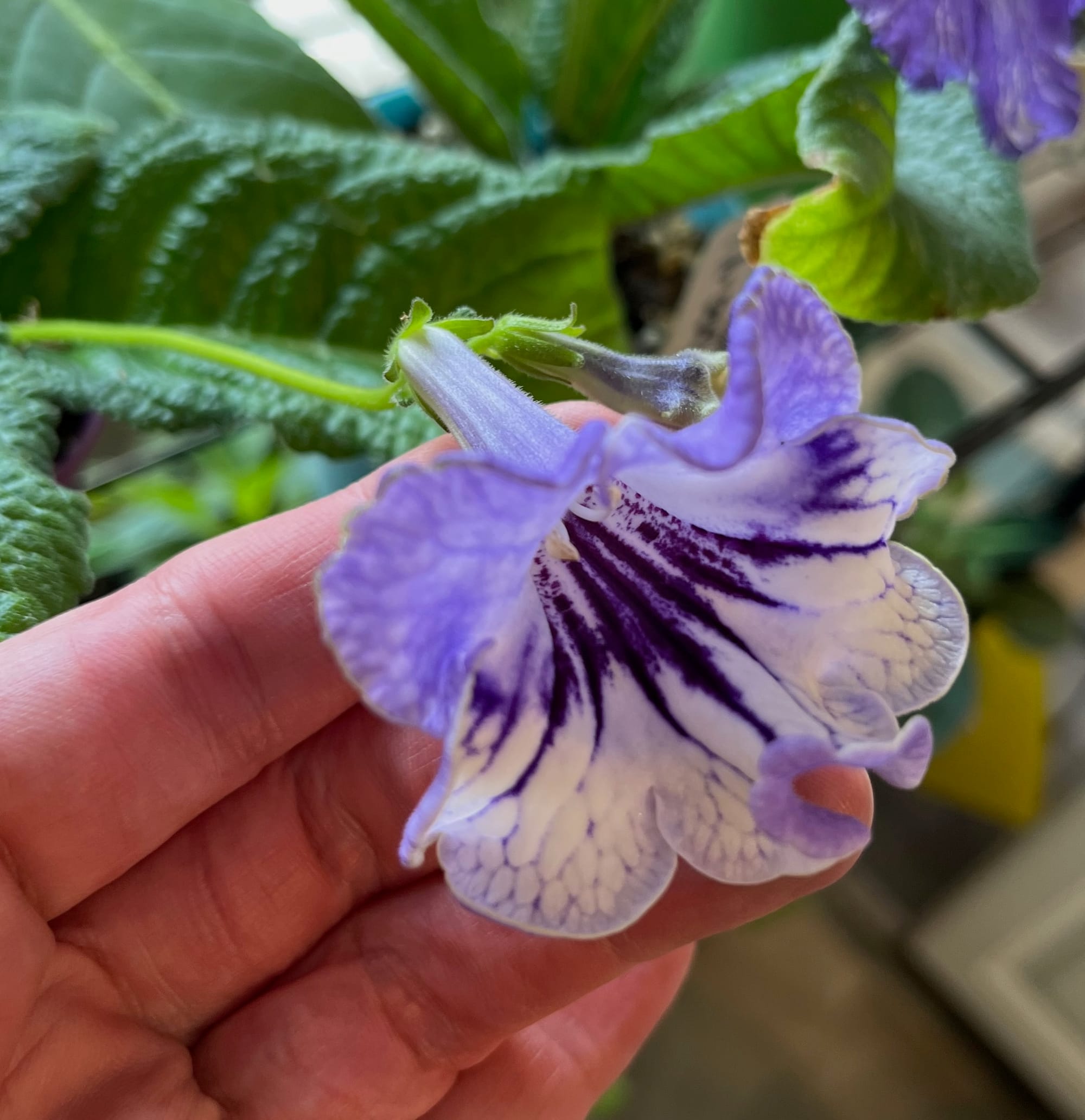
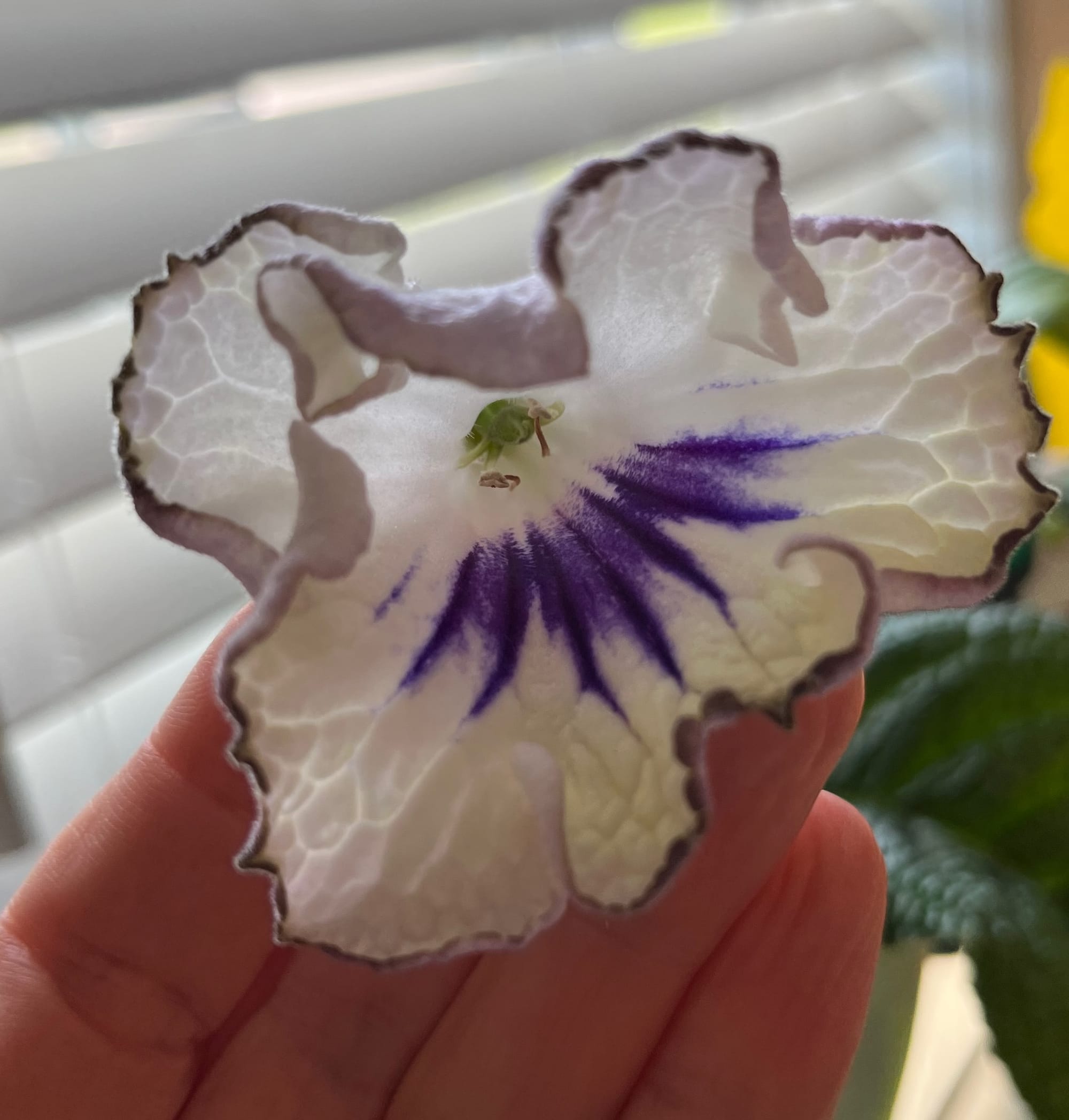
I was going to tuck these photos into an upcoming post about a more general outdoor gardening progress report I was working on, but it occurred to me that there is very little information about crossing "Streps" on the interwebs. People looking for that information would have to wade through posts about daylilies, dahlias, zinnias, sunflowers, gladiolas, and heirloom mums to locate that section. Creating a post on just this one topic also allows me more space to back up and go more in depth. I'm going to number these posts as the progress reports go along over the next couple months for someone wanting to follow along.
I should also mention that as I've hybridized a lot of different types of flowers, there are many times I think, "Oh, I had this exact same issue, but with African violets," or with many other flowers. When you're creating something that probably wouldn't happen naturally in nature, you encounter problems and nuances that would create roadblocks or complications in the wild. Mother Nature isn't usually designing for things like patterns or flower size. She's designing to make sure the plant’s seeds are pollinated and that it produces healthy offspring, which will eventually produce more seeds.
For example, a Café au Lait dahlia wouldn't exist in nature. The flowers would have flopped over to the ground and probably been eaten by rodents. They’d never be pollinated because of the double petals, and very little pollen would have made it out of the flower onto other blooms.
But humans like to create "monstrosities" — flowers designed for their own enjoyment. Whether that's the color, the size of the bloom, the aroma of the flower, the pattern, the color of the foliage, the resistance to certain pests, or the way the petals curl and ruffle, many of these attributes cost the plant energy without offering much help in the wild. In fact, they often hinder the plant's success.
From a human standpoint, you can often solve problems in your hybridizing project by looking at how similar issues were solved with other flowers.
Because there is so little information about streptocarpus hybridizing online, I had to often learn by trial and error. I later discovered that many issues I was having, could be solved by looking at what I observed with other flowers. I could see people out there in the world hybridizing streps, but they didn't go into all the details that would explain the various problems I was encountering. They were just showing their creations.
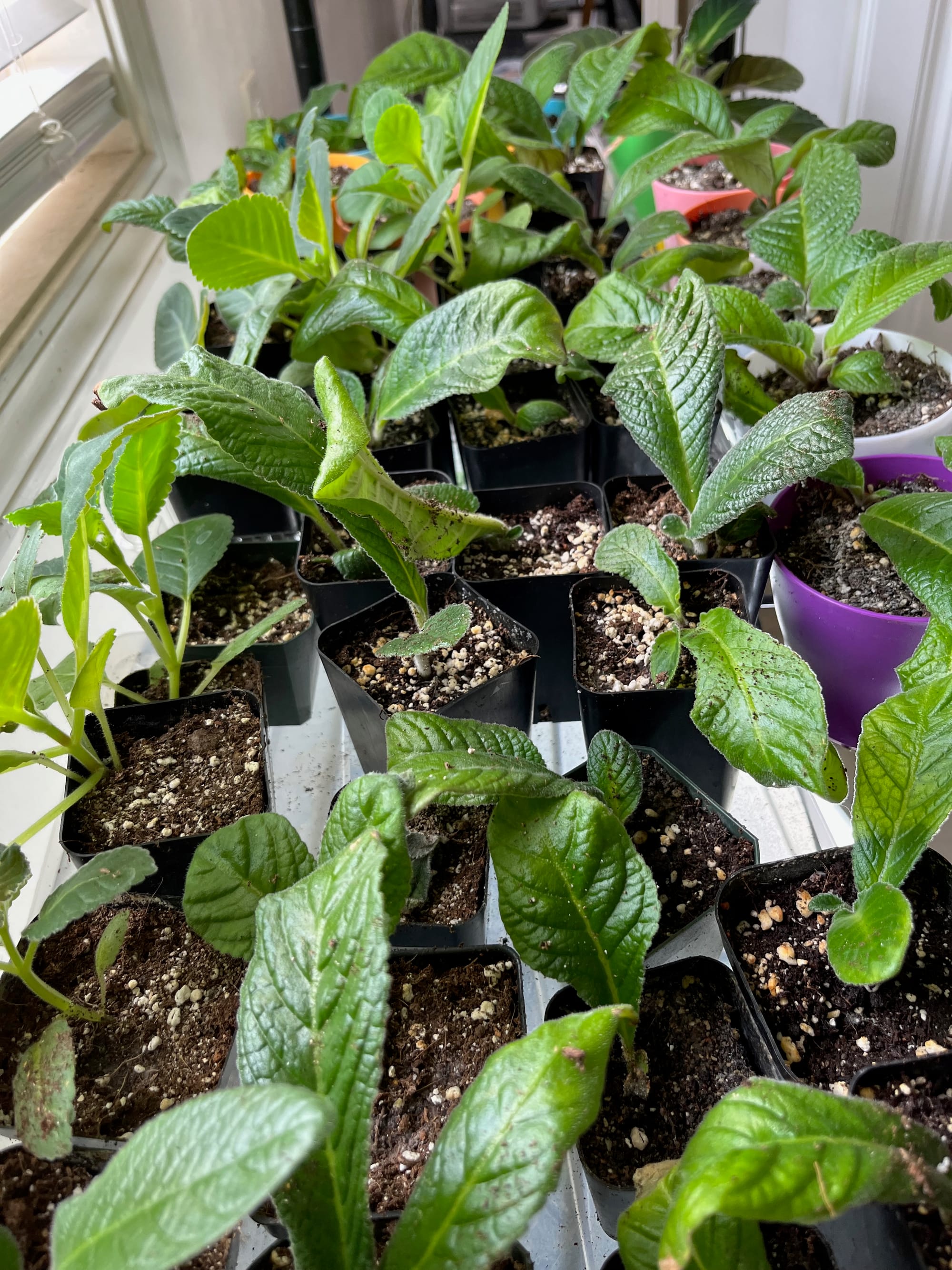
A couple months ago, I got probably more seed pods from streps I was growing than I would be able to grow up if I spent the rest of my life on that task. But I sprinkled 2 - 3 seed pods from my crosses into a plastic salad container filled with 1-2" of soil and watered. Then covered it and waited. I had harvested the seeds literally that same day. I had heard or thought I might need to let them dry a couple weeks or refrigerate them a couple more weeks. I was too impatient, so I just went for it immediately. I also thought I'd probably get a low or poor germination rate, but I was thinking if I got 10 seeds to germinate I'd be thrilled about it. The problem turned out to be that I got about 100% germination rate. I soon had sprouting streps coming out of my ears, and I, one by one, transplanted each one into a bigger tray. They then quickly filled up those trays, and I had to move them one by one into individual pots. We're talking hundreds of pots. At the same time, I also started some speckled gloxinia seeds. So I also have hundreds of those as well.
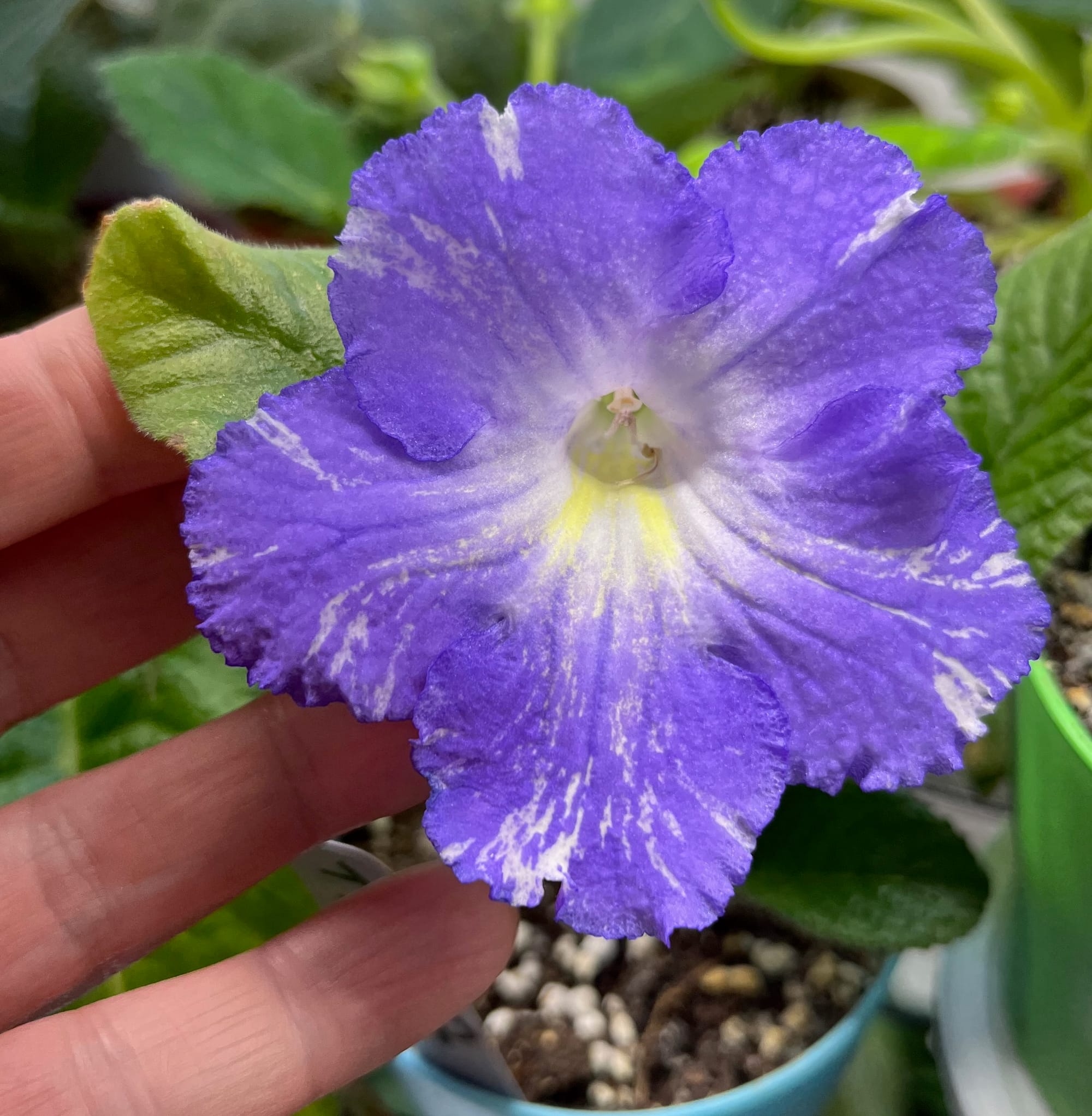
One concern I've had right off the bat is that almost all of the early blooms are what I would call "keepers." Ones I can't rule out or easily cull because they are uninteresting, poor flower specimens, ugly, or just not great colors. Previously, I had grown strep seeds I purchase from other people and most ended up being tossed because they didn't have flowers worth keeping. And I'd randomly get one keeper that had an interesting color or unique flower shape. The flower above is compelling to me because it's large, almost like a bluish petunia, and has what might be a "fantasy" type coloration. A slight ruffle around the edges. Once this is a mature plant, a mass of these flowers could be very compelling. Eventually I want to start selling live plants on my Etsy shop, but I'm not quite ready for that. Here is the same flower, but when it was first opening:
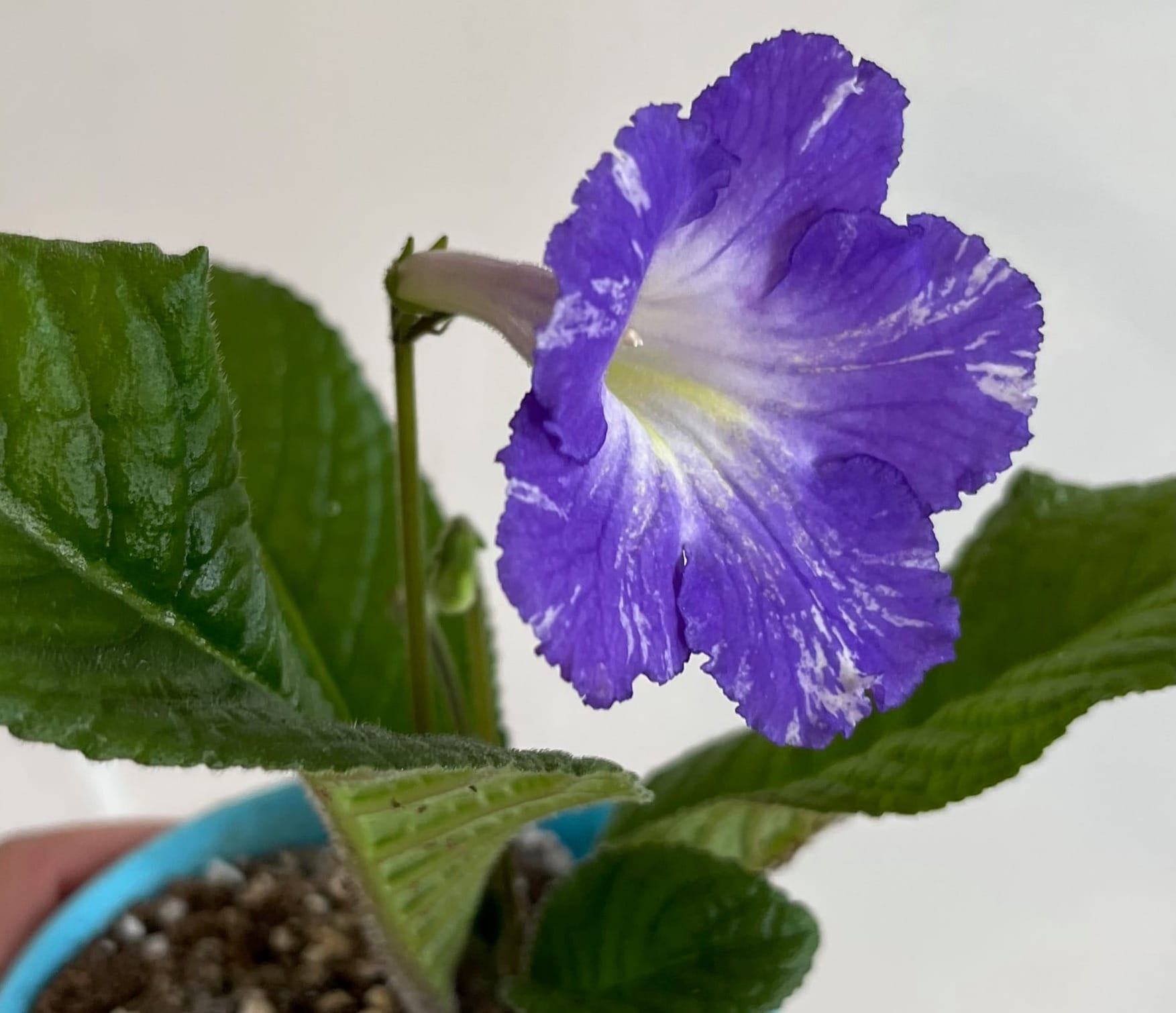
On the flower below, I removed the petal mass because it was getting so big the stalk couldn’t support the weight. Once you see the size of the flower sitting in my hand, you can understand why it was having trouble. Absolutely huge blooms. What I like about this particular bloom is the webbing pattern in the bottom half and the green edging around the petals.
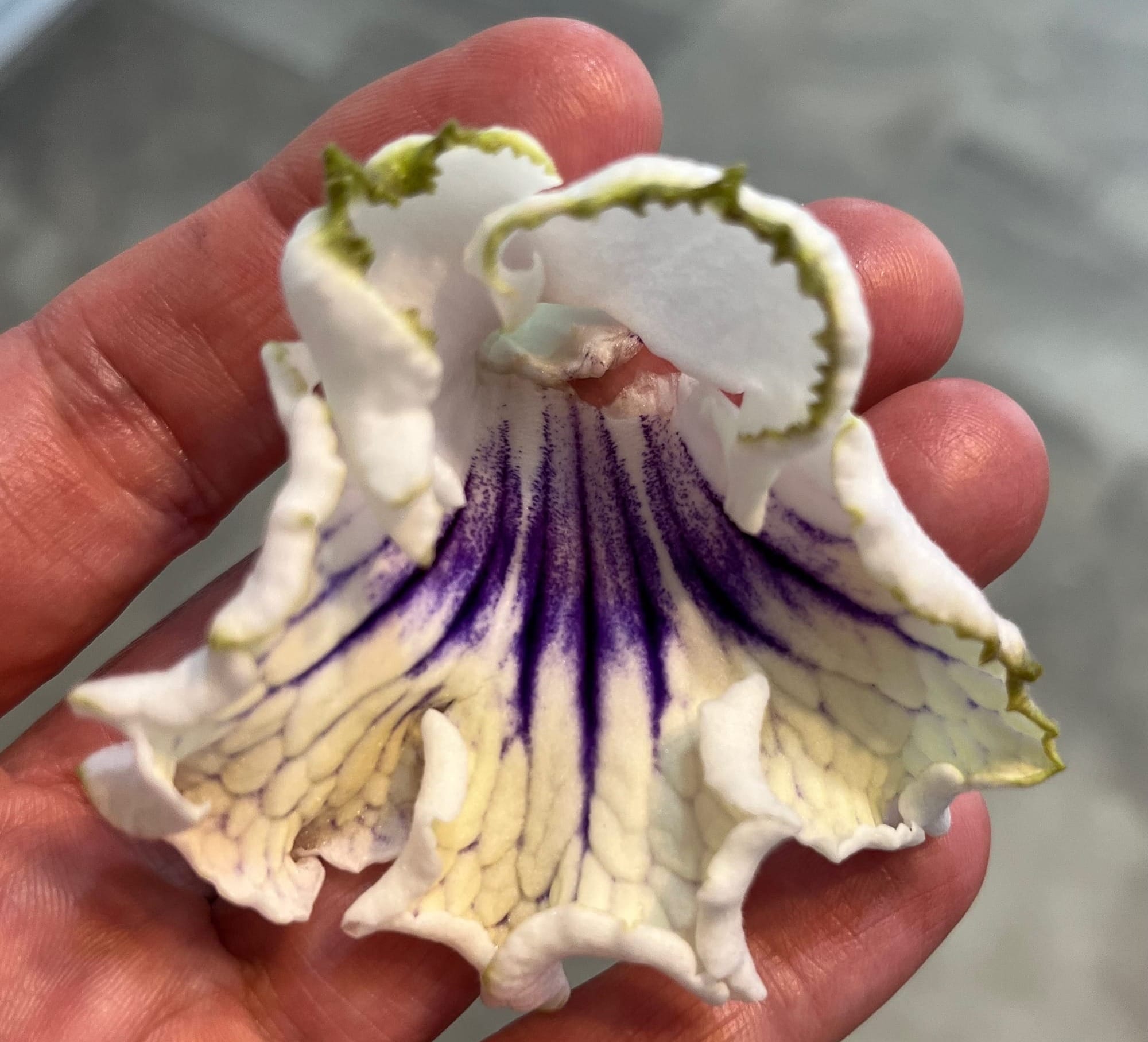
The flower below has some great webbing and a nice purple coloration. The flowers are large but not gigantic. A mass of these on a mature plant would be quite interesting.
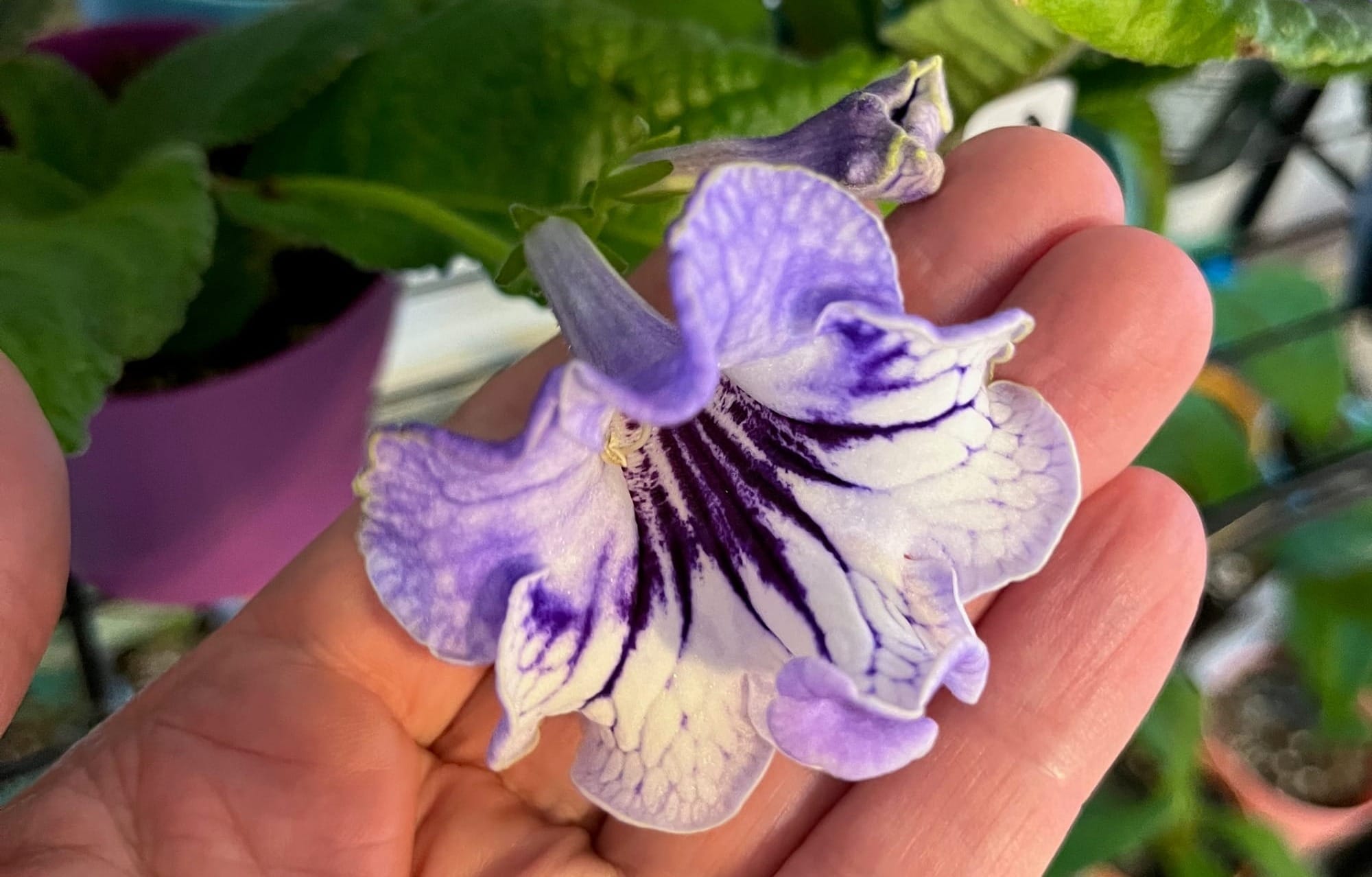
The flower below was almost a possible cull because I wasn't blown away by it initially. As it aged, it developed a dark outline around the petal edges that I liked. I think, ultimately, it's better to have too many good choices than not enough. I still have hundreds of these plants that haven't bloomed yet.
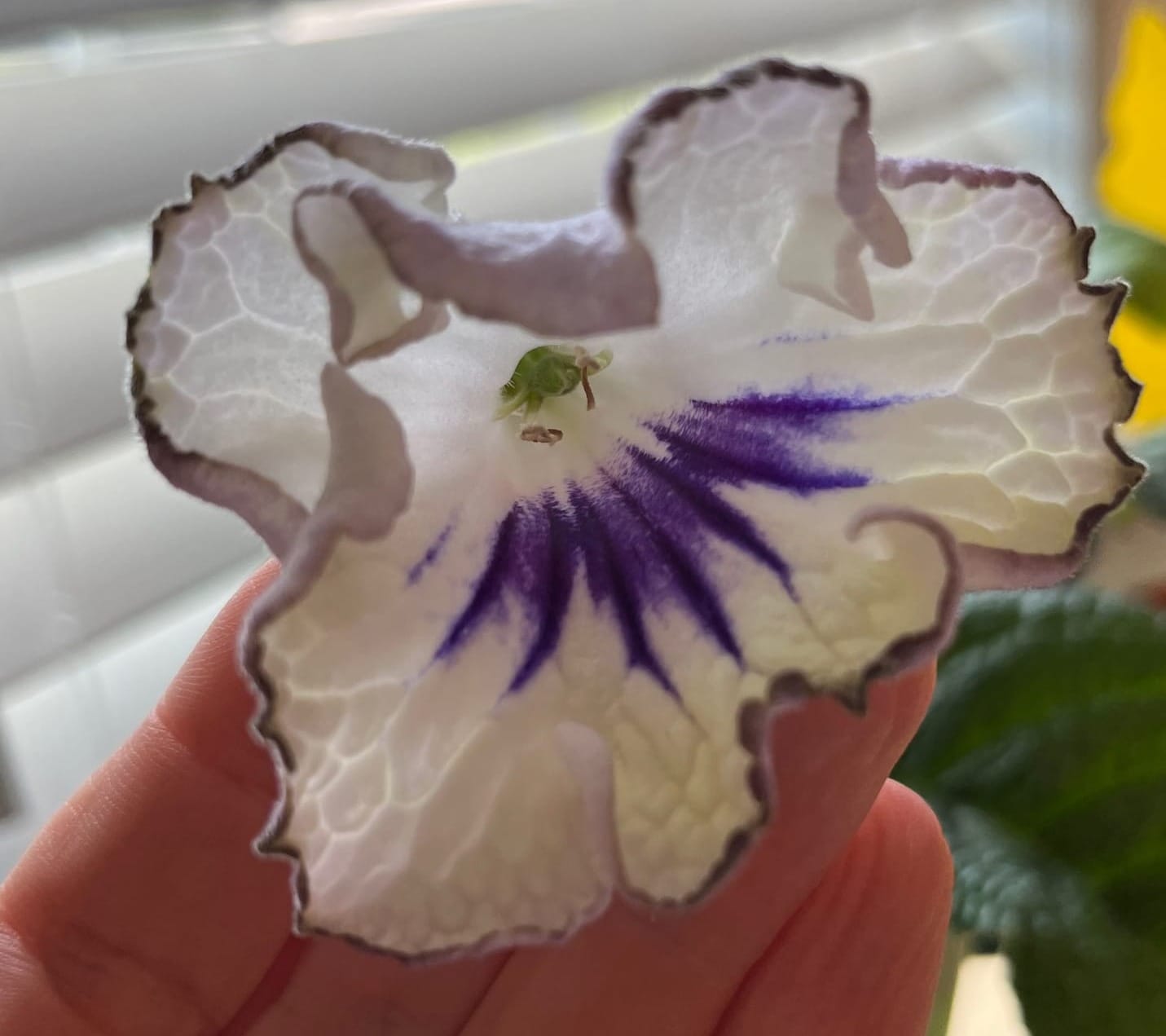
Out of concern that I would have too many streps in the white and purple range, I planted a new batch of seeds this week with salmon, red, pink, and another flower pattern (speckles instead of webbing). This should give me a wider range of color options in a few months and also get the next set of plants moving down the pipeline.
I was kind of hoping my gloxinias wouldn’t be that good because it would allow me to cut a couple hundred plants. But unfortunately, many are also keepers. I’ll be posting about the gloxinias soon.
© Copyright Terry Aley
The Aley Acres seed shop on Etsy.
Dahlias, Notes from a Gardener book on Amazon.
Floral Art and Landscape Painting Etsy shop.
TikTok, some gardening posts.
